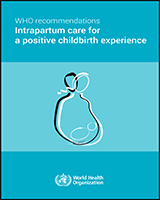EB Table 3.2.13: Opioid analgesia for pain relief
Comparison 1: Parenteral opioids compared with placebo or no opioids (PDF, 91K)
Comparison 1.a. Pethidine intramuscular (IM) compared with placebo
Source:† Ullman R, Smith LA, Burns E, Mori R, Dowswell T. Parenteral opioids for maternal pain management in labour. Cochrane Database Syst Rev. 2010;(9):CD007396.
Comparison 1.b. Pethidine (intravenous [IV]) compared with placebo (PDF, 59K)
Source:† Ullman R, Smith LA, Burns E, Mori R, Dowswell T. Parenteral opioids for maternal pain management in labour. Cochrane Database Syst Rev. 2010;(9):CD007396.
Comparison 1.c. Pentazocine intramuscular (IM) compared with placebo (PDF, 58K)
Source:† Ullman R, Smith LA, Burns E, Mori R, Dowswell T. Parenteral opioids for maternal pain management in labour. Cochrane Database Syst Rev. 2010;(9):CD007396.
Comparison 1.d. Tramadol intramuscular (IM) compared with no analgesia (PDF, 56K)
Source:† Ullman R, Smith LA, Burns E, Mori R, Dowswell T. Parenteral opioids for maternal pain management in labour. Cochrane Database Syst Rev. 2010;(9):CD007396.
Comparison 2: Parenteral opioids (various types) compared with pethidine (PDF, 85K)
Comparison 2.a. Meptazinol intramuscular (IM) compared with pethidine (IM)
Source:† Ullman R, Smith LA, Burns E, Mori R, Dowswell T. Parenteral opioids for maternal pain management in labour. Cochrane Database Syst Rev. 2010;(9):CD007396.
Comparison 2.b. Tramadol intramuscular (IM) compared with pethidine (IM) (PDF, 74K)
Source:† Ullman R, Smith LA, Burns E, Mori R, Dowswell T. Parenteral opioids for maternal pain management in labour. Cochrane Database Syst Rev. 2010;(9):CD007396.
Comparison 2.c. Tramadol intramuscular (IM) with triflupromazine compared with pethidine (IM) with triflupromazine (PDF, 56K)
Source:† Ullman R, Smith LA, Burns E, Mori R, Dowswell T. Parenteral opioids for maternal pain management in labour. Cochrane Database Syst Rev. 2010;(9):CD007396.
Comparison 2.d(i). Morphine or diamorphine intramuscular (IM) compared with pethidine (IM) (PDF, 117K)
Source:† Ullman R, Smith LA, Burns E, Mori R, Dowswell T. Parenteral opioids for maternal pain management in labour. Cochrane Database Syst Rev. 2010;(9):CD007396.
Comparison 2.d(ii). Diamorphine intramuscular (IM) plus prochlorperazine compared with pethidine (IM) plus prochlorperazine (PDF, 72K)
Source:† Ullman R, Smith LA, Burns E, Mori R, Dowswell T. Parenteral opioids for maternal pain management in labour. Cochrane Database Syst Rev. 2010;(9):CD007396.
Comparison 2.e. Dihydrocodeine intramuscular (IM) compared with pethidine (IM) (PDF, 57K)
Source:† Ullman R, Smith LA, Burns E, Mori R, Dowswell T. Parenteral opioids for maternal pain management in labour. Cochrane Database Syst Rev. 2010;(9):CD007396.
Comparison 2.f. Pentazocine intramuscular (IM) compared with pethidine (IM) (PDF, 80K)
Source:† Ullman R, Smith LA, Burns E, Mori R, Dowswell T. Parenteral opioids for maternal pain management in labour. Cochrane Database Syst Rev. 2010;(9):CD007396.
Comparison 2.g. Nalbuphine intramuscular (IM) compared with pethidine (IM) (PDF, 80K)
Source:† Ullman R, Smith LA, Burns E, Mori R, Dowswell T. Parenteral opioids for maternal pain management in labour. Cochrane Database Syst Rev. 2010;(9):CD007396.
Comparison 2.h. Phenazocine intramuscular (IM) compared with pethidine (IM) (PDF, 56K)
Source:† Ullman R, Smith LA, Burns E, Mori R, Dowswell T. Parenteral opioids for maternal pain management in labour. Cochrane Database Syst Rev. 2010;(9):CD007396.
Comparison 2.i. Butorphanol intramuscular (IM) compared with pethidine (IM) (PDF, 59K)
Source:† Ullman R, Smith LA, Burns E, Mori R, Dowswell T. Parenteral opioids for maternal pain management in labour. Cochrane Database Syst Rev. 2010;(9):CD007396.
Comparison 2.j. Fentanyl intravenous (IV) compared with pethidine (IV) (PDF, 73K)
Source:† Ullman R, Smith LA, Burns E, Mori R, Dowswell T. Parenteral opioids for maternal pain management in labour. Cochrane Database Syst Rev. 2010;(9):CD007396.
Comparison 2.k. Nalbuphine intravenous (IV) compared with pethidine (IV) (PDF, 56K)
Source:† Ullman R, Smith LA, Burns E, Mori R, Dowswell T. Parenteral opioids for maternal pain management in labour. Cochrane Database Syst Rev. 2010;(9):CD007396.
Comparison 2.l. Phenazocine intravenous (IV) compared with pethidine (IV) (PDF, 57K)
Source:† Ullman R, Smith LA, Burns E, Mori R, Dowswell T. Parenteral opioids for maternal pain management in labour. Cochrane Database Syst Rev. 2010;(9):CD007396.
Comparison 2.m. Butorphanol intravenous (IV) compared with pethidine (IV) (PDF, 66K)
Source:† Ullman R, Smith LA, Burns E, Mori R, Dowswell T. Parenteral opioids for maternal pain management in labour. Cochrane Database Syst Rev. 2010;(9):CD007396.
Comparison 2.n. Morphine intravenous (IV) compared with pethidine (IV) (PDF, 57K)
Source:† Ullman R, Smith LA, Burns E, Mori R, Dowswell T. Parenteral opioids for maternal pain management in labour. Cochrane Database Syst Rev. 2010;(9):CD007396.
Comparison 2.o. Alphaprodine intravenous (IV) compared with pethidine (IV) (PDF, 55K)
Source:† Ullman R, Smith LA, Burns E, Mori R, Dowswell T. Parenteral opioids for maternal pain management in labour. Cochrane Database Syst Rev. 2010;(9):CD007396.
Comparison 2.p. Patient-controlled analgesia (PCA) pentazocine compared with PCA pethidine (PDF, 68K)
Source:† Ullman R, Smith LA, Burns E, Mori R, Dowswell T. Parenteral opioids for maternal pain management in labour. Cochrane Database Syst Rev. 2010;(9):CD007396.
Comparison 2.q. Patient-controlled analgesia (PCA) remifentanil compared with PCA pethidine (PDF, 73K)
Source:† Ullman R, Smith LA, Burns E, Mori R, Dowswell T. Parenteral opioids for maternal pain management in labour. Cochrane Database Syst Rev. 2010;(9):CD007396.
Comparison 2.r. Patient-controlled analgesia (PCA) nalbuphine compared with PCA pethidine (PDF, 62K)
Source:† Ullman R, Smith LA, Burns E, Mori R, Dowswell T. Parenteral opioids for maternal pain management in labour. Cochrane Database Syst Rev. 2010;(9):CD007396.
Comparison 2.s. Patient-controlled analgesia (PCA) fentanyl compared with PCA pethidine (PDF, 68K)
Source:† Ullman R, Smith LA, Burns E, Mori R, Dowswell T. Parenteral opioids for maternal pain management in labour. Cochrane Database Syst Rev. 2010;(9):CD007396.
Comparison 2.t. Patient-controlled analgesia (PCA) (intramuscular [IM]) meptazinol compared with PCA (IM) pethidine (PDF, 61K)
Source:† Ullman R, Smith LA, Burns E, Mori R, Dowswell T. Parenteral opioids for maternal pain management in labour. Cochrane Database Syst Rev. 2010;(9):CD007396.

